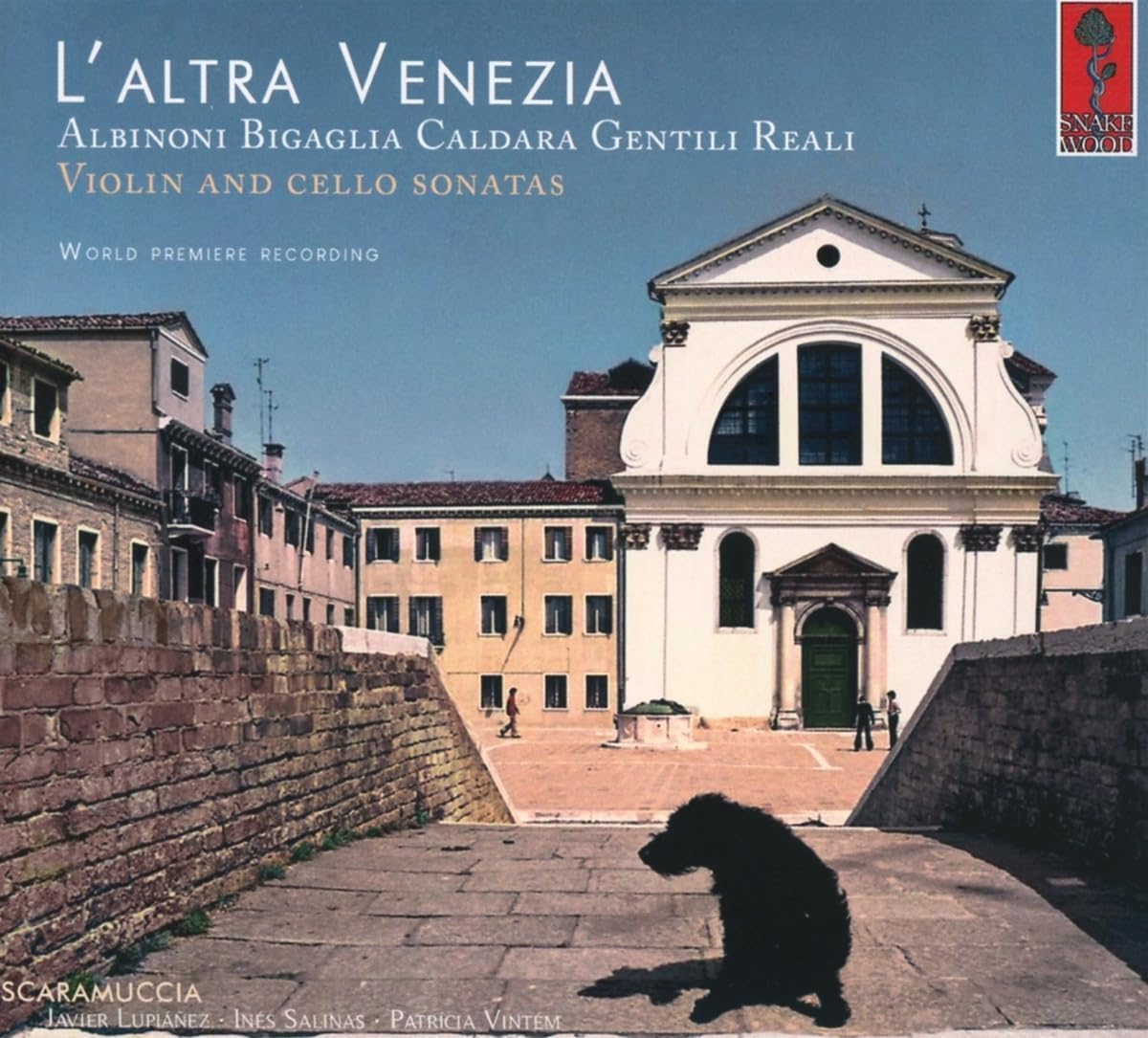Violin and cello sonatas
Scaramuccia (Javier Lupiáñez violin, Inés Salinas cello, Patrícia Vintém harpsichord)
77:23
Snakewood SCD202301
This wonderfully presented recording takes us back to the famous musical city at the very turn of the 18th century, before it became synonymous with just a single composer’s works. These well-chosen sonatas display the keen seminal talents of a few known and possibly lesser-known composers, who all contributed to the city’s musical life in this early period. The two sonatas attributed to Albinoni are recent finds from 2021 in the Estensischen (Musikalien) Collection in the Austrian State Library in Vienna; the first work in G minor is redolent of Albinoni’s Balletti a quattro, the B flat major piece appears to exhibit the later Albinonian style. The ensemble’s fine violinist captures these refined elements with elegant poise and perfect phrasing! The opening Bigaglia piece was copied out by Pisendel during his Venice trip (1716-17), the third movement being in the famous Siciliana mode; although the composer isn’t named in the Dresden copy, the Amsterdam publication of 1725 echo and match his predominant style. The Caldara work in F major has an overt flamboyance and polished refinement which the leader of Scaramuccia captures with a panache; this piece also hails from the Estensischen Collection in Vienna.
After these excellent examples of the early sonata form, we encounter the Sonatas a Violoncello by Giorgio Gentili, which feel like expressive fantasias for the instrument. Inés Salinas is an accomplished cellist. The Capriccio da camera in B minor for violin, violoncello and cembalo of circa 1707 is a felicitous union that the ensemble fully relishes. The closing violin piece by Reali nods towards the Corellian modes of expression.
This is a perfect survey of these works by significant “other” composers who deserve their place in the development of this seminal genre from this famous musical city.
It must be said that the CD notes are never prolix or overburdened by detail, being superbly written by Michael Talbot; indeed, this could be also said of the playing here, never overburdened or laboured, the perfect phrasing and understanding of the stylistic elements on display makes for an informed and beautifully balanced approach to these incipient contributions by “significant” others in this “other” Venice.
David Bellinger
